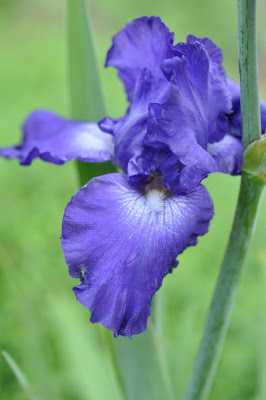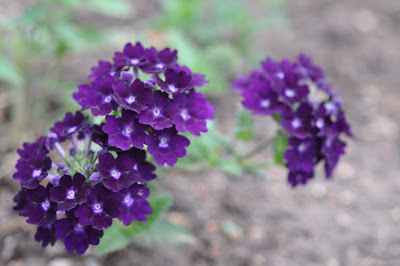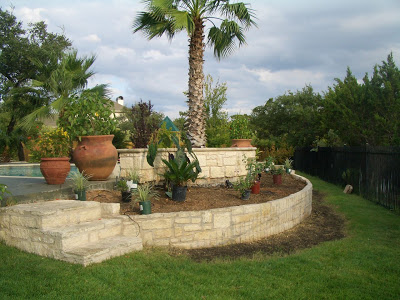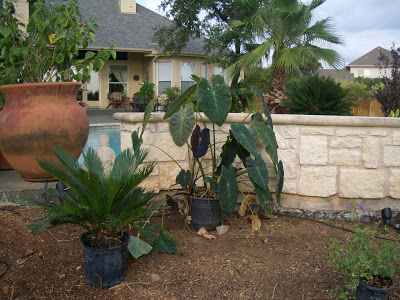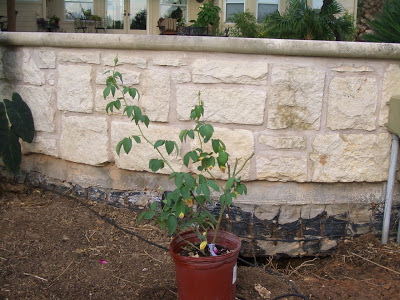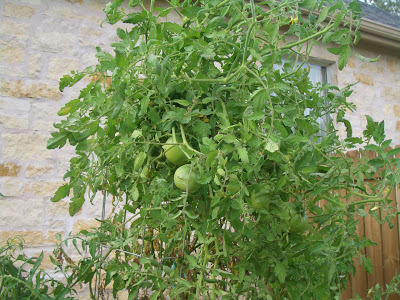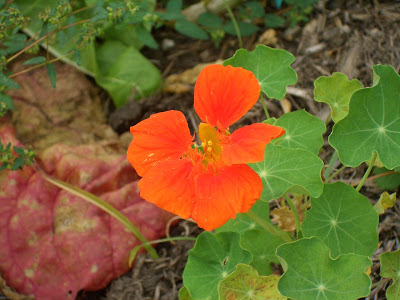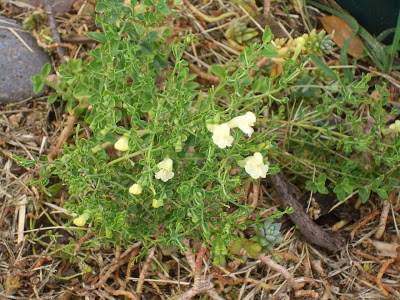Blooms abound in the spring garden
My morning walk through the garden brightened my day. My garden is still young, compared to my previous 16-year-old garden. Filling in holes where plants have been lost and adding layers over time has paid off. This spring the garden feels full and lush. Today. (Check back with me in August!)
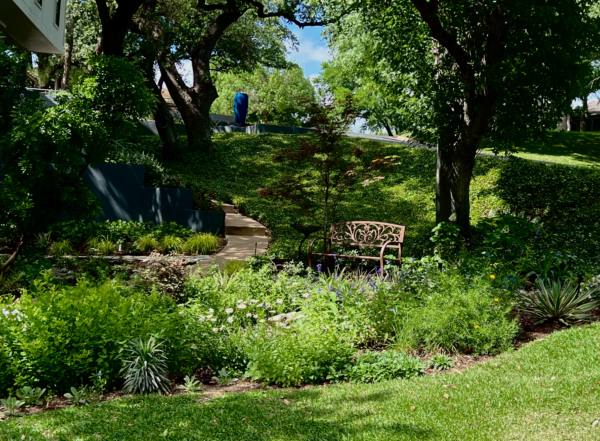
We’ve been fortunate to have had a little bit of rain lately in our part of Austin. Because of our topography, it’s not uncommon for different parts of town to have dramatically different rainfall.
It’s been a rough couple of years. Snowpocalyse Uri in 2021, another terrible freeze in 2022 and multiple days at 110 or higher last summer.
This spring feels like the garden is coming into its own. Things are filling out and look like my vision for the space.
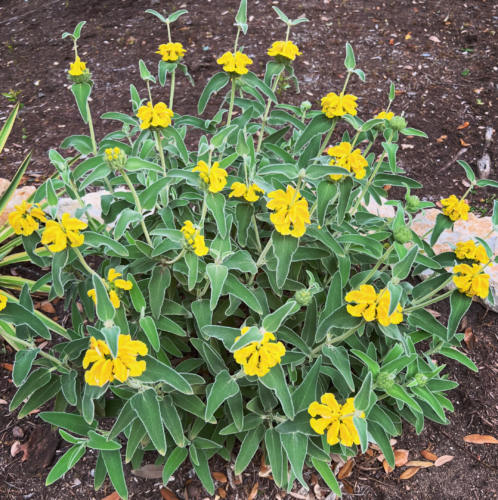
Jerusalem sage is one of my go-to plants. It doesn’t mind our heat and it’s evergreen and deer resistant.
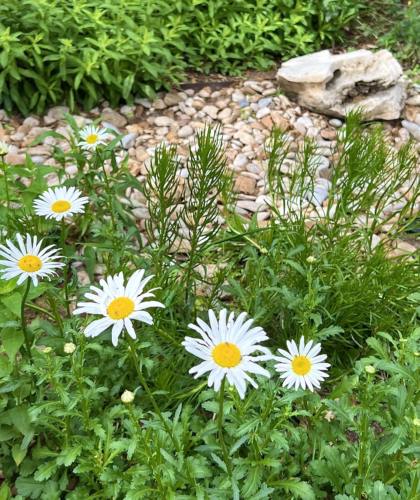
Few things perk up the spring landscape like shasta daisies.
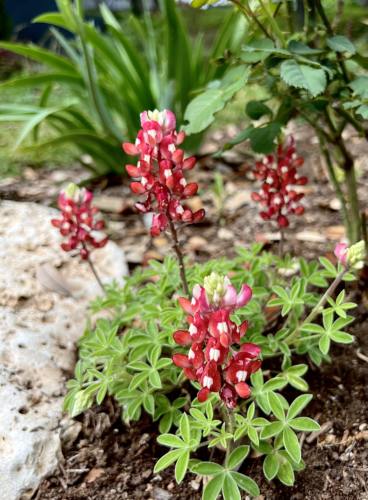 While I have a large swath of bluebonnets along my creek bed, this year I ventured out and bought a few of the cranberry-colored ones to add into the garden.
While I have a large swath of bluebonnets along my creek bed, this year I ventured out and bought a few of the cranberry-colored ones to add into the garden.
They look so interesting compared to all the blue ones.
We won’t talk about the idea that they were bred to represent A&M University, the arch rival of Austin’s University of Texas!
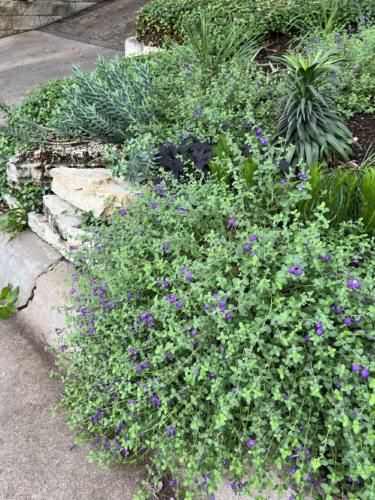
A fabulous border plant, purple skullcap looks great trailing over my street-side boulders. This soft, mounding perennial blooms reliably from spring through fall.
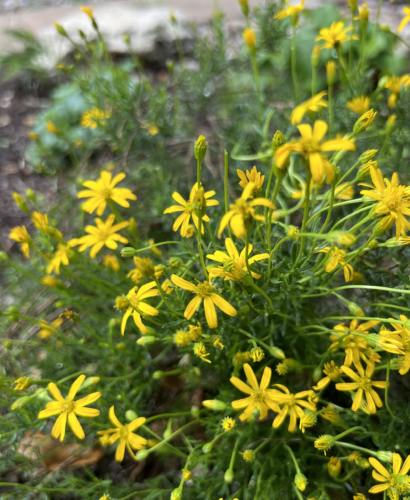
This scrappy little Damianita grows throughout the tough landscape of the Texas Hill country in the most difficult conditions. Another great border plant, it grows about 18 inches tall.
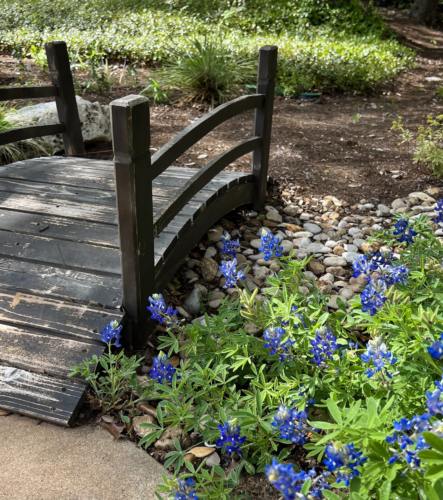
The bluebonnets are almost done. I’m just waiting for the seed pods to dry out and start to open before plucking them. In November, I will plant all of this year’s seeds, so we have an even bigger show next spring.
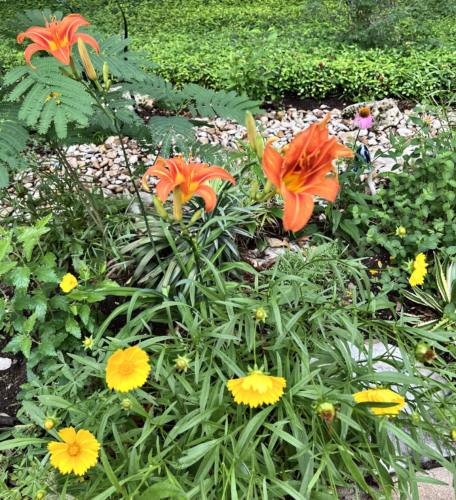
The ditch lilies and the coreopsis intermingle and blow in the breeze together.
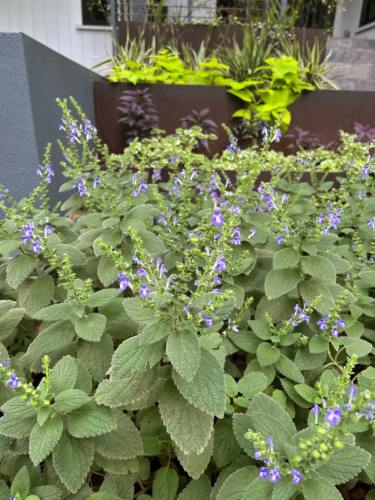
Heartleaf skullcap is another of my spring favorites. The luminescence of the tiny blooms is enchanting atop the velvety-soft leaves.
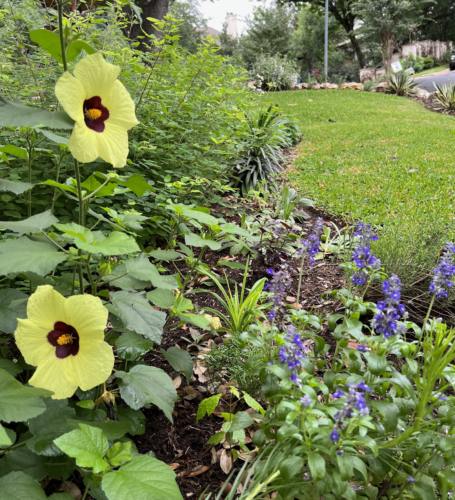
Lemon mallow makes a striking statement against the nearby Henry Duelberg salvia.
It’s 90+ today, but we are all holding out hope that this summer isn’t as brutal as last. Spending as much time in the garden now as we can!

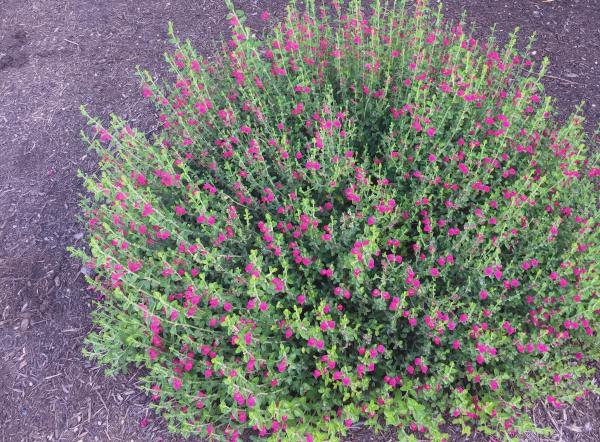
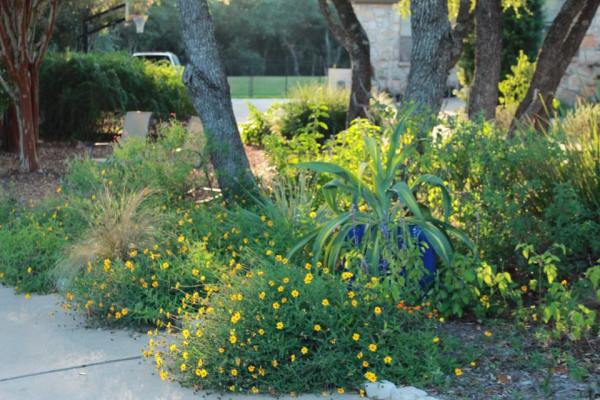 Plants grow, and some of them grow a lot once they’re out of that tiny pot you bought and nestled in your lovely garden. Planting too close together creates more work later as you struggle to prune all the time or are forced to remove plants to allow enough space for them all to thrive. Believe nursery tags and nursery staff and follow the guidelines in your research.
Plants grow, and some of them grow a lot once they’re out of that tiny pot you bought and nestled in your lovely garden. Planting too close together creates more work later as you struggle to prune all the time or are forced to remove plants to allow enough space for them all to thrive. Believe nursery tags and nursery staff and follow the guidelines in your research.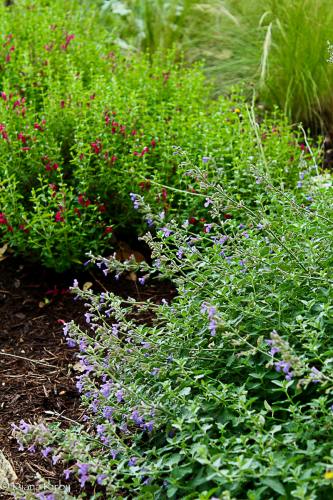 The plants in the front of your layered beds will be ground covers or border plants. For most gardens, these plants typically don’t get much bigger than about 18” tall. There are, of course, exceptions, depending on the overall scope and proportion of the landscape, whether it’s a very small space or a sizeable piece of property. The true test is how they will look in comparison to the next line or area of plants behind them in the bed. Border plants should provide a contrast in size between layers and should look good together, combining different colors, textures and shapes.
The plants in the front of your layered beds will be ground covers or border plants. For most gardens, these plants typically don’t get much bigger than about 18” tall. There are, of course, exceptions, depending on the overall scope and proportion of the landscape, whether it’s a very small space or a sizeable piece of property. The true test is how they will look in comparison to the next line or area of plants behind them in the bed. Border plants should provide a contrast in size between layers and should look good together, combining different colors, textures and shapes.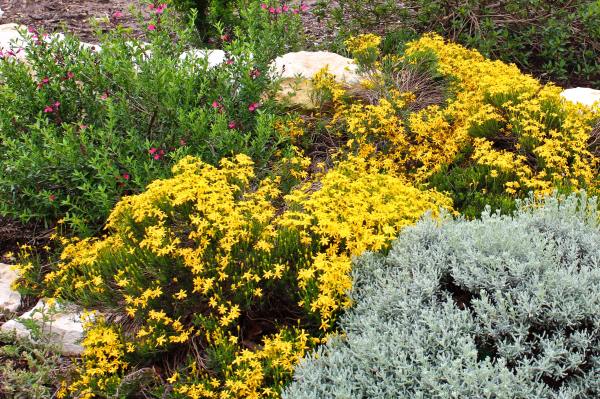 The terms full sun, full shade, part sun, part shade are associated with specific amounts. Full sun means a site gets at least 6 full hours of sun most days. But, here in Central Texas, some plants labeled full sun may still struggle if that’s all blistering afternoon sun. Do your research to determine if there are any limits on tolerance that might apply.
The terms full sun, full shade, part sun, part shade are associated with specific amounts. Full sun means a site gets at least 6 full hours of sun most days. But, here in Central Texas, some plants labeled full sun may still struggle if that’s all blistering afternoon sun. Do your research to determine if there are any limits on tolerance that might apply.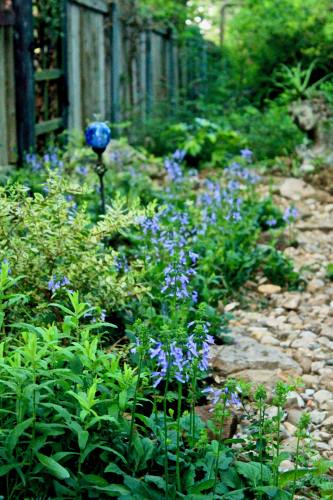 Full shade doesn’t mean no sun at all. Labels calling for full shade conditions refer to less than 3 hours of sunlight each day, and filtered light the remainder of the day. In the Austin area, those 3 hours simply cannot fully expose plants in the heat of the day. A little dappled morning light and good afternoon shade is a much better guide for us.
Full shade doesn’t mean no sun at all. Labels calling for full shade conditions refer to less than 3 hours of sunlight each day, and filtered light the remainder of the day. In the Austin area, those 3 hours simply cannot fully expose plants in the heat of the day. A little dappled morning light and good afternoon shade is a much better guide for us.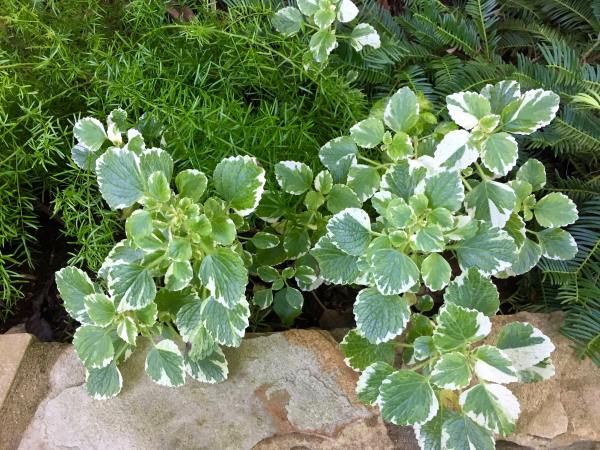 Border plants don’t have to be planted in a straight line. You can also cluster plants in sections according to size, color or texture. Place them in drifts in front of the next section of larger plants based on which ones look best together.
Border plants don’t have to be planted in a straight line. You can also cluster plants in sections according to size, color or texture. Place them in drifts in front of the next section of larger plants based on which ones look best together.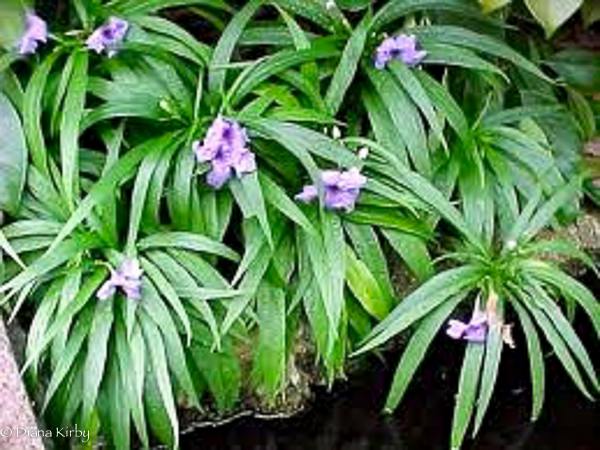 Many annuals also make excellent border plants, adding color and interest at specific times through the year and allowing you to change out your look with the seasons.
Many annuals also make excellent border plants, adding color and interest at specific times through the year and allowing you to change out your look with the seasons.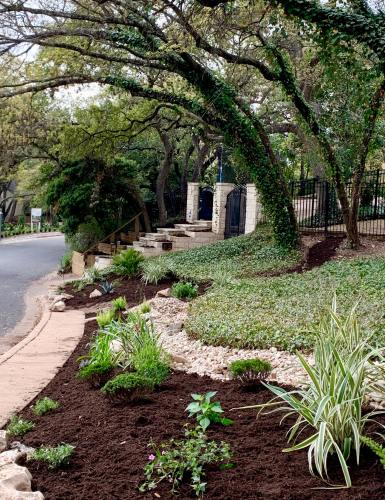
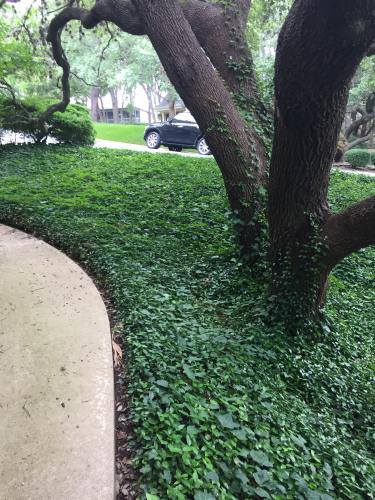
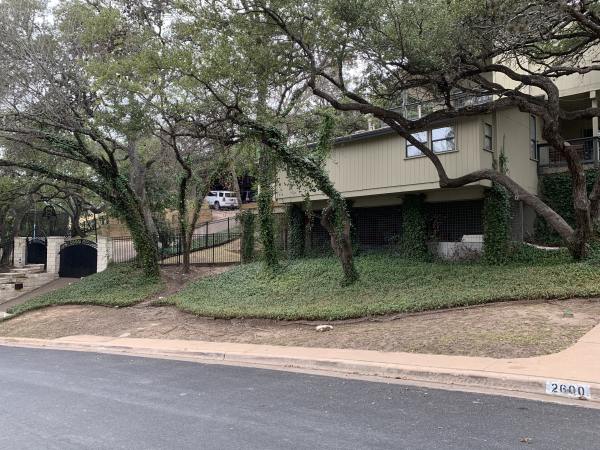
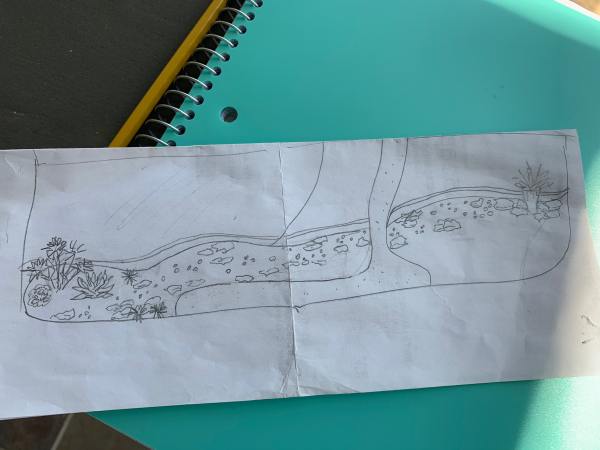 I’ve scribbled on several napkins and I’ve had a few snippets of ideas about possible plant combinations. Luckily, I came to my senses and decided to take the time to assess the space, allow my vision to evolve, and focus on some of my favorite plants. The sketch of plants grew as I decided to intersect the long space with a dry creek, boulders and a large ceramic pot as the focal point.
I’ve scribbled on several napkins and I’ve had a few snippets of ideas about possible plant combinations. Luckily, I came to my senses and decided to take the time to assess the space, allow my vision to evolve, and focus on some of my favorite plants. The sketch of plants grew as I decided to intersect the long space with a dry creek, boulders and a large ceramic pot as the focal point.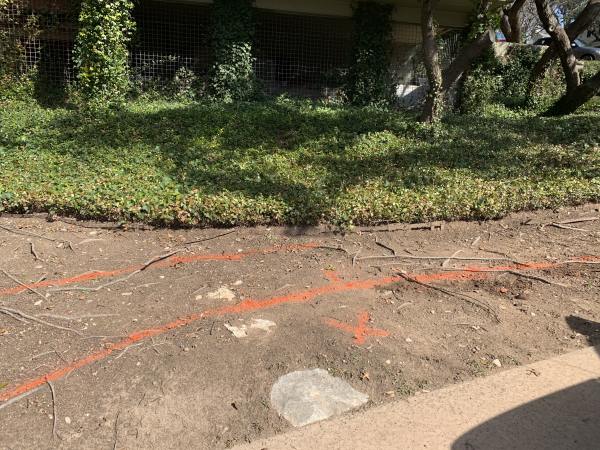
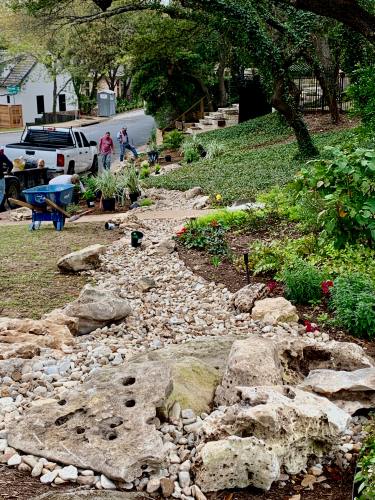
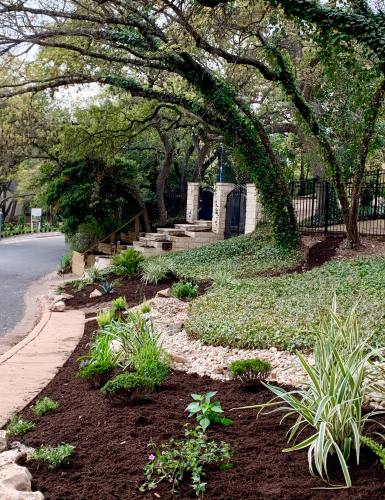
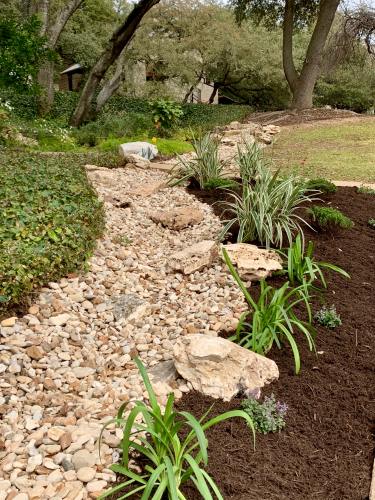 To create year-round interest, catmint is intermingled with the elegant and strappy leaves of Agapathus. I like the textural contrast between the delicate, gray-green catmint and the lime-y foliage of the agapanthus.
To create year-round interest, catmint is intermingled with the elegant and strappy leaves of Agapathus. I like the textural contrast between the delicate, gray-green catmint and the lime-y foliage of the agapanthus.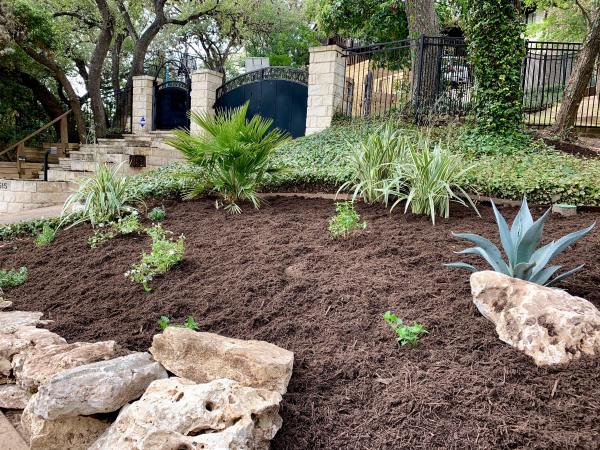 At the other end of the bed and the creek, the shining star will be a deep magenta Maggie rose (which I haven’t found yet). She’ll be flanked by Dianella, a Mediterranean fan palm, trailing white lantana, purple skullcap and a Weberi agave. Just past the Weberi, another Dianella keeps an Indigo spires salvia company along with an artichoke and a scattering of sculptural foxtail ferns.
At the other end of the bed and the creek, the shining star will be a deep magenta Maggie rose (which I haven’t found yet). She’ll be flanked by Dianella, a Mediterranean fan palm, trailing white lantana, purple skullcap and a Weberi agave. Just past the Weberi, another Dianella keeps an Indigo spires salvia company along with an artichoke and a scattering of sculptural foxtail ferns.